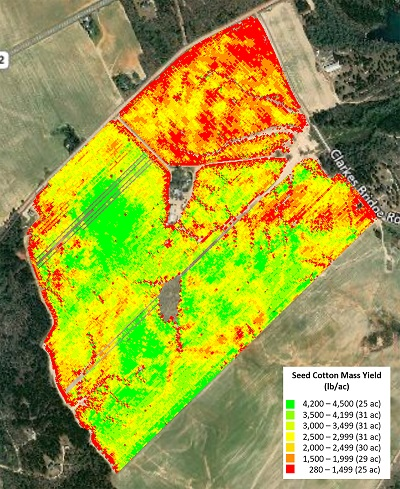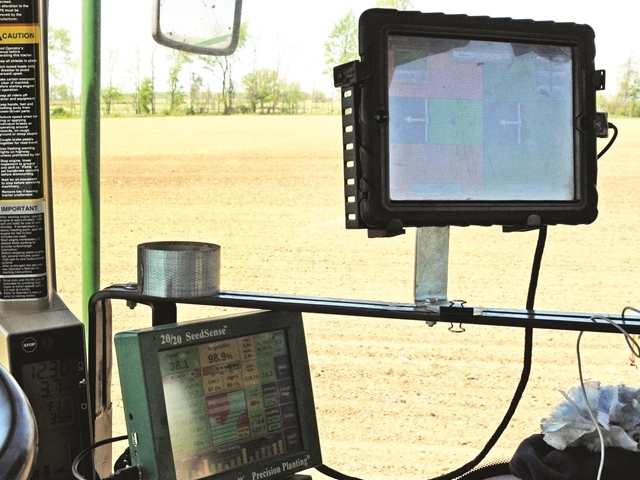A cotton farmer who uses yield maps while harvesting this year’s crop could potentially increase yields next season while becoming more efficient with input costs, according to University of Georgia precision agriculture specialist Wes Porter.
Yield monitors are a group of sensors installed on harvesting equipment that measure spatial yield variability. The data produces yield maps that provide a farmer with key information about the fields being harvested.
Yield maps provide a visual image that clearly shows the variability of yields produced across a given field. While most growers have an idea of which parts of their fields produce high and low yields, yield maps quantify the data for growers.

Porter, whose research in precision agriculture at UGA garnered him the Educator/Researcher Award from the PrecisionAg Institute this past July, believes that yield maps are designed to become an essential part of a farmer’s operation.
“This data will answer the question, ‘Am I actually being profitable in this area or not?’ That will help the farmers make management decisions on inputs for the field. How do we want to manage that field next year to maximize profits?” Porter said. “If you’ve created a yield map from the data from your previous year, you can make decisions on what you want to do for the upcoming spring, especially if you have a couple of years of yield data from a couple of different crops. You can develop some yield stability zones.”
With those zones established, farmers can answer questions like: Are there areas in the field that always produce high yields? Are there spots that always generate low yields? Were yields high one year and low the next? Farmers can use that data to formulate inputs on fertilization rates, seeding, irrigation and other production factors.
“There’s a method that can be used across crops where we can compare crop to crop to crop as long as we’ve got yield data for it. This is the development of yield stability zones, which is an extremely powerful tool that we probably neglect a lot of times,” Porter said. “Yield perspective is one area of precision agriculture we can really build a foundation from.”
Clint Thompson is a news editor with the University of Georgia College of Agricultural and Environmental Sciences, based in Tifton.
Πηγή: Cotton Grower

